Microbial, Biochemical & Immunological Assessment of Dental Caries
2 Department of Oral Diagnostics and Surgical Sciences, School of Dentistry, International Medical University, Malaysia
3 Public Health Dentistry, YMT Dental College, Kharghar, Navi Mumbai, India
4 Dentistry Programme, Department of Oral Pathology, Batterjee Medical College, Jeddah, Saudi Arabia, Email: pramodrc@gmail.com
5 Oral Medicine, MAHSA University, Malaysia
Citation: Murugeshappa DG, et al. Microbial, Biochemical & Immunological Assessment of Dental Caries. Ann Med Health Sci Res. 2018;8:336-339
This open-access article is distributed under the terms of the Creative Commons Attribution Non-Commercial License (CC BY-NC) (http://creativecommons.org/licenses/by-nc/4.0/), which permits reuse, distribution and reproduction of the article, provided that the original work is properly cited and the reuse is restricted to noncommercial purposes. For commercial reuse, contact reprints@pulsus.com
Abstract
Introduction: Dental caries is a localized, pathological infectious process that ends up in the destruction of hard dental tissue. Among the factors that have been related to greater cariogenic activity, a high concentration in the mouth of bacteria with acidophilic activity (Streptococci mutans & Lactobacillus) is of greatest importance. There is some limited evidence about the role of salivary secretory immunoglobulin’s and proteins in the prevention of dental caries. Methodology: The study included a sample size of 70 subjects equally divided into Group I (caries active individuals) and Group II (caries free individuals). Stimulated saliva was collected to assess the levels of mutant’s streptococci and Lactobacillus count, while unstimulated saliva was collected to assess the levels of salivary total proteins and salivary secretory IgA. Data obtained was subjected to statistical analysis using Statistical package for social sciences (SPSS v 22.0, IBM). The data of colony counts were analyzed with non-parametric testing of hypothesis, using Mann Whitney test. Inter group comparison of variables like salivary secretory IgA and salivary proteins were done using independent t test Result: There was a statistically highly significant difference and correlation seen between the means of various variables like DMF score, salivary mutant’s streptococci, salivary Lactobacilli, salivary IgA and salivary proteins. (p<0.01), Conclusion: Although the results of the study points towards the positive correlation of dental caries with salivary total proteins and negative correlation with salivary IgA, further extensive studies with larger sample size is required with indepth analysis of individual proteins and species specific IgA to understand their exact role in dental caries.
Keywords
Dental caries; Salivary; Immunoglobulin A; Total protein; Streptococci mutans; Lactobacillus
Introduction
Dental caries is a localized and transmissible pathological infectious process characterized by demineralization of the inorganic contents by acids, followed by the destruction of the organic components by the enzymes released by the bacteria. [1] It is the main oral health problem in both industrialized and increasing in developing countries and it affects 60-90% of school-aged children and adults. [2] It is a multifactorial disease and bacteria’s are the cause of caries lesions. Substantial evidence quotes that Streptococci mutans (MS) and Lactobacilli (LB) are always associated with dental caries. MS has been strongly associated with the initiation of dental caries; studies show that LB may be more significant in the progression of caries lesions. [3]
As saliva surrounds soft and hard oral tissues and contains the necessary elements required for host protection, it could be a useful biomarker, in case of dental caries it is one of the major contributing intrinsic and host factors, its flow, viscosity, buffering capacity, etc., play a major role in the prevention, initiation, and progression of the disease. It helps in the prevention of caries by its antibacterial effect. [1]
Saliva is composed of more than 1380 different proteins and Secretory Immunoglobulin A (S-IgA) which are involved in antibacterial, buffering, agglutination and digestion of starch and other carbohydrates. The S-IgA characterized as a component of the immune system “first-line of defense” against pathogenic microorganisms, prevents the adherence of cariogenic microorganisms to hard surfaces and, in addition to inhibition of the activity of glucosyltransferases (Gtf), it neutralizes viruses and toxins, inactivates enzymes, excludes antigen in saliva, and prevents activities that may affect cariogenic microorganism colonization. [4]
Salivary proteins play a significant role in maintaining the health of the oral cavity and preventing caries. Variability’s in salivary proteins and their posttranslational modifications may play an important role in determining their protective features toward dental caries. Role of salivary protein is explained as “double-edged swords” i.e., they may play a protective role depending on their site, location, and action, or may increase colonization of microorganism. [5]
Previous investigations have reported contradictory results regarding the association of salivary levels of s-IgA and dental caries. Some authors reported higher levels of salivary s-IgA in caries-resistant individuals in comparison to caries-susceptible ones, suggesting an effective protective function of this immunoglobulin. [6] On the other hand, several other investigations did not observe the association between the presence of dental caries and salivary s-IgA levels. [7] Based on the lack of conclusive information on dental caries immunity with this background we aimed to correlate the levels of salivary mutans streptococci, lactobacillus with the salivary IgA and salivary total proteins levels between caries active and caries-free population. This study opens a gateway for understanding the actual role of salivary IgA and Proteins in the carious process and development of newer strategies for the prevention of dental caries.
Materials and Methods
A total of 70 subjects were selected based on the inclusion and exclusion criteria’s. Based on the DMFT score the subjects were divided into 2 groups, Group 1: caries active (DMFT ≥ 5) and Group 2: caries free (DMFT = 0).
Inclusion criteria
• Healthy children
• Age group of 7-12 years old
Exclusion criteria
• Presented with root caries or periodontal disease
• Local or systemic disease
• The long history of medication
• Wearing orthodontics appliances
Salivary MS and LB assessment
Saliva collection was scheduled after the clinical examination between 10 am to 1 pm. Children were made to swallow the preexisting saliva, in order to clear the mouth of any residual unstimulated saliva. After this, each child was asked to chew a standard piece of paraffin wax, for 5 min and the stimulated saliva was collected. The saliva samples of all the participants were identified by a code number during the period of sample collection and processing. Ivoclar Vivadent CRT® bacteria culture tubes were used for the assessment of MS and LB. The culture media were coated with subject’s stimulated saliva and incubated at 37°C for 48 hours. At the end of 48 hours, the culture plates were compared with the standard culture picture provided by the manufacturer.
Determination salivary IgA
Unstimulated whole salivary samples were collected into cryovials. Subjects were informed in advance not to eat or drink (except for water) one hour before saliva collection to minimize possible food debris and stimulation of saliva and froze at -80°C. Salivary IgA levels of each subject were analyzed using the CUSABIO Human secretory immunoglobulin A (SIgA) ELISA kit.
Determination of salivary total protein level
The salivary levels of total protein were assessed using the Cayman Protein Determination Kits following the Bradford method. Where, its concentration was determined by interpolation of the absorbance of each sample on the calibration curve.
Statistical analysis
Data obtained were subjected to statistical analysis using the Statistical package for social sciences (SPSS v 22.0, IBM). Since the data of colony counts were expressed in > or < 5 power to 10, It was transformed and categorized as ordinal data and analyzed with nonparametric testing of hypothesis, using the Mann Whitney test. Inter group comparison of variables like Salivary IgA and Salivary Proteins was done using independent t-test For all the statistical tests, p<0.05 was considered to be statistically significant.
Results
Out of 70 subjects Group 1, caries active (8 males and 27 females) and Group 2, caries free (16 males and 19 females) [Figure 1] comprised of an Indian, Malaysian and Chinese population [Figure 2]. There was a statistically significant difference seen between the means of various variables like DMF score, Salivary MS, LB, Salivary IgA and Salivary Proteins. (p<0.01), means of S IgA being higher in group 2 and mean of Salivary Proteins, Salivary MS, LB being higher in group 1 [Figures 3 to 6].
Discussion
Dodds et al. concluded that prediction of caries risk has been of long-standing interest and is very important for the development of new preventive strategies for caries. This is especially significant for young children. It has been suggested earlier that the whole saliva is an easily available fluid which can be collected noninvasively and used to measure and monitor the risk for caries. [8]
The aim of this study was to correlate the levels of salivary mutans streptococci, lactobacillus with the salivary IgA and salivary total proteins levels between caries active and caries-free population.
The study included subjects of 7 years and above so that all subjects have mixed dentition, DMF index with WHO criteria were used to identify the caries risk and caries-free population. Saliva was collected in 2 stages, unstimulated for the assessment of IgA and proteins and Stimulated for the assessment of Streptococci mutans and lactobacillus. An anaerobic medium was created for the culturing of the bacteria. The unstimulated saliva was stored at -80 degree Celsius mainly to avoid denaturation of IgA and proteins and the growth of unwanted bacteria [Table 1].
| Salivary Streptococci mutans |
Salivary Lactobacillus | Salivary IgA mcg/ml |
Salivary Proteins mg/ml | |||
|---|---|---|---|---|---|---|
| DMF score | Correlation Coefficient | 0.801** | 0.504** | -0.841** | 0.899** | |
| Salivary Streptococci mutans |
Correlation Coefficient | 0.801** | 0.460** | -0.773** | 0.770** | |
| Salivary Lactobacillus | Correlation Coefficient | 0.504** | 0.460** | -0.378** | 0.453** |
- ve correlation means as one variable increases, the other decreases.
+ ve correlation means one variable increases the other also increases
Interpretation of ‘r’
<0.2: Slight correlation; negligible relationship
0.2-0.4: Low correlation; weak relationship
0.4-0.7: Moderate correlation; substantial relationship
0.7-0.9: High correlation; marked relationship
Table 1: Overall correlations to obtain r values.
The result showed a statistically significant relation of MS and LB to caries activity. This is consistent with the study conducted by B. Sakeenabi, et al. [2] Role of MS and LB in caries formation were related to their properties of acidogenic, aciduric and sugar transport system. The ability of Streptococci mutans to produce extrapolysaccharide and intrapolysaccharide further enhance its cariogenicity. CRT bacteria dip slides were coated with dual selective culture mediums on both the sides for MS and LB each. The stimulated saliva was collected by asking the patient to bite on paraffin wax, so that the bacteria attached to the pellicle and plaque gets released into the salivary stream.
Salivary IgA could help in defensive mechanism by maintaining the integrity of the tooth surface by limiting the microbial adherence; by neutralizing enzymes, toxins, and virus; or by acting in synergy with other antibacterial factors such as lysozyme, lactoferrin, salivary peroxidase, and mucin. [10]
The assessment of levels of salivary IgA and Total proteins was done using unstimulated saliva since the levels may decrease with a high rate of salivary flow. The subjects with lower caries activity level had a higher amount of salivary IgA. A similar result was stated by Paul et al., [9] Camling and Kohler, [10] Cogulu et al., [11] Parkash et al., [12] and Doifode and Damle. [13] They also reported that virulence factors of Streptococci mutans may be inhibited by IgA and difference in IgA levels may be due to increased production of IgA antibodies against Streptococcus mutans in caries free than caries active childrens. IgA levels can be affected by various systemic diseases, gingival and periodontal diseases can also have an impact on the levels of IgA and proteins. Hence we made sure that the included subjects were healthy without any systemic diseases and demonstrated good gingival and periodontal health.
Many similar studies were conducted in the past and contradictory results were obtained. Studies conducted by Defarias and Bezerra [14] and Bruno et al., [15] who found an increase in s-IgA levels with increase in caries activity. It may be a suggestive of the defensive mechanism against mutans streptococcus in whole saliva.
The total protein concentration of saliva correlates directly with the salivary amylase levels. Salivary amylase is the enzyme which helps in the digestion of carbohydrates and results in an acid generation. This may be the probable reason of the high protein levels among the caries active group. The answer to this hypothesis will need further and deeper levels of research. An important constitute of salivary glycoprotein is mucin. Human saliva consists of atleast two distinct type of mucin; lower molecular weight MUC7 and high molecular weight MUC5B. These secreted mucin due to its hydrophilic properties lubricate, protect oral tissue surface by modulating oral micro-organism. Many researches revealed mucin levels increased with increase in caries prevalence. This increase may be attributed to increase in production of mucin during caries development as a protective mechanism, thereby protecting tooth surface from desiccation and insults. [5]
In our study, salivary total protein rise with an increasing number of carious teeth, which is supported by Kargul, et al. [16] However, conflicting results were shown from studies related to salivary total protein and dental caries. [1] These contradictory results is possibly due to the presence of over 1380 proteins in the saliva. [17] Further individual protein assessments are need to be done to study the role of each salivary protein components in caries formation.
Conclusion
Within the limitations of the study, the results suggest that dental caries is closely associated with mutans streptococci, Lactobacillus and largely affected by the salivary levels of secretory IgA and Proteins. Further extensive studies involving a larger sample size will be required to understand the actual interplay between the disease, agent and host factors. Studies focusing on salivary assessment of bacteria specific IgA and individual protein assessment will help in understanding the actual role played by the salivary proteins and IgA.
Conflict of Interest
The authors disclose that they have no conflicts of interest.
REFERENCES
- Martins C, Buczynski AK, Maia LC, Siqueira WL, De Araujo Castro GFB. Salivary proteins as a biomarker for dental caries. J Dent 41. 2013;2.
- Sakeenabi B, Hiremath SS. Dental caries experience and salivary Streptococcus mutans, Lactobacilli scores, salivary flow rate and salivary buffering capacity among 6 year old Indian school children. J Clin Exp Dent. 2011;3:e412-e417.
- Toi CS, Mogodiri R, Cleaton-Jones PE. Streptococci mutans and Lactobacilli on healthy and carious teeth in the same mouth of children with and without dental caries. Microbial Ecology in Health and Disease 2000;12:35-41.
- Rashkova MM, Baleva M, Peneva N, Jegova TG. Secretory immunoglobulin a (siga) and dental caries of children with different diseases and conditions influencing oral medium Journal of IMAB - Annual Proceeding (Scientific Papers) 2009.
- Nireeksha, Hegde M, Kumari S, Ullal H, Kedilaya V. Salivary proteins as biomarkers in dental caries: In vivo study. Dent Oral Craniofac Res. 2017;3:1-7
- Fernandes FR, Nagao AT, Zelante F, Carneiro-Sampaio MM. Dental caries and salivary anti-Streptococcus mutans antibodies in IgA deficient children. Advances in Experimental Medicine and Biology 1995;371B:1145-1148.
- Kirtaniya BC, Chawla HS, Tiwari A, Ganguly NK, Sachdev V. Natural prevalence of antibody titres to GTF of S. mutans in saliva in high and low caries active children. Journal of Indian Society of Pedodontics and Preventive Dentistry 2009;27:135-138.
- Dodds MW, Johnson DA, Mobley CC, Hattaway KM. Parotid saliva protein profiles in caries-free and caries-active adults. Oral Surg Oral Med Oral Pathol Oral Radiol Endod. 1997;83:244-251.
- Rose PT, Gregory RL, Gfell LE, Hughes CV. IgA antibodies to Streptococcus mutans in caries resistant and susceptible children. Pediatr Dent. 1994;16:272-275.
- Camling E, Kohler B. Infection with the bacterium Streptococcus mutans and salivary IgA antibodies in mothers and their children. Arch Oral Biol 1987;32:817-823.
- Cogulu D, Sabah E, Kutukculer N, Ozkinay F. Evaluation of the relationship between caries indices and salivary secretory IgA, salivary pH, buffering capacity and flow rate in children with Down's syndrome. Arch Oral Biol 2006;51:23-28.
- Parkash H, Sharma A, Banerjee U, Sidhu SS, Sundaram KR. Humoral immune response to Streptococci mutans associated with dental caries. Natl Med J India 1994;7:263-266.
- Doifode D, Damle SG. Comparison of salivary IgA levels in caries free and caries active children. Int J Clin Dent Sci 2011;2:10-14
- Defarias DG, Bezerra AC. Salivary antibodies, amylase and protein from children with early childhood caries. Clin Oral Investig 2003;7:154-157.
- Bruno B, Pezzini A, Menegazzi M. Salivary levels of immunoglobulin and dental caries in children. Boll Soc Ital Biol Sper 1985;61:381-386.
- Kargül B, Yarat A, Tanboga I, Emekli N. Salivary protein and some inorganic element levels in healthy children and their relationship to caries. J Marmara Univ Dent Fac 1994;2:434-440.
- Al Kawas S, Zubaidah HA, David BR. Ferguson. Potential uses of human salivary protein and peptide analysis in the diagnosis of disease. Arch Oral Biol. 2012;57:1-9.

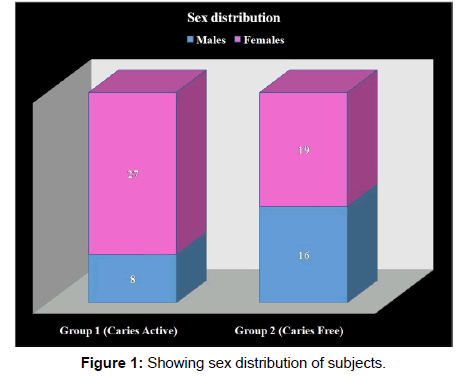
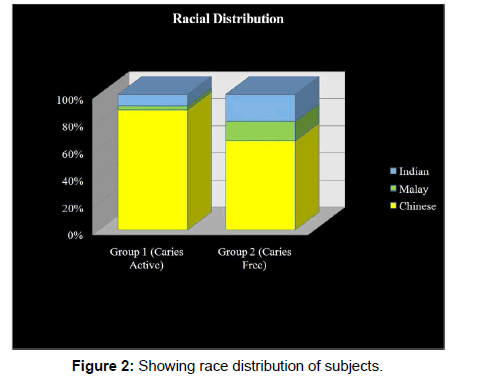
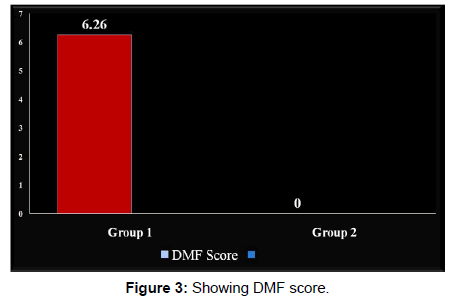
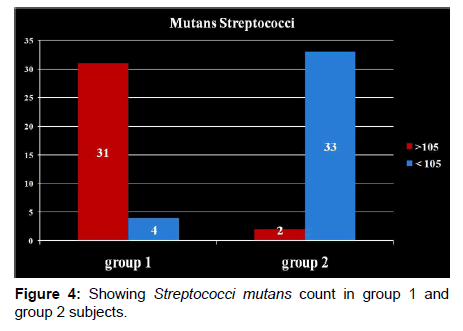
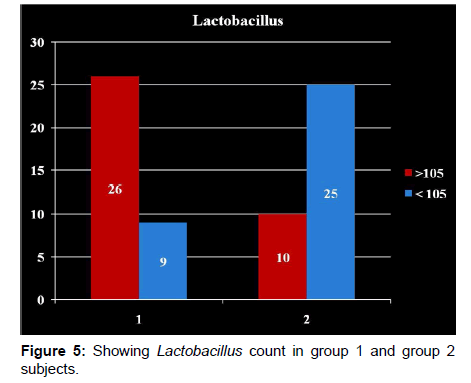
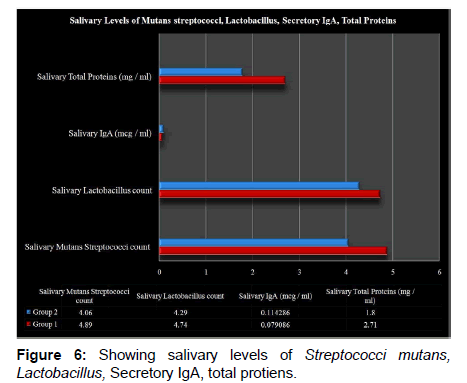



 The Annals of Medical and Health Sciences Research is a monthly multidisciplinary medical journal.
The Annals of Medical and Health Sciences Research is a monthly multidisciplinary medical journal.